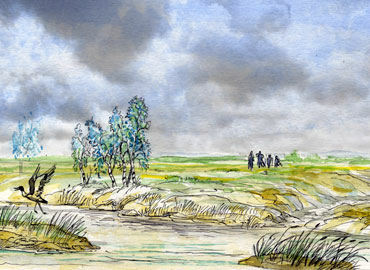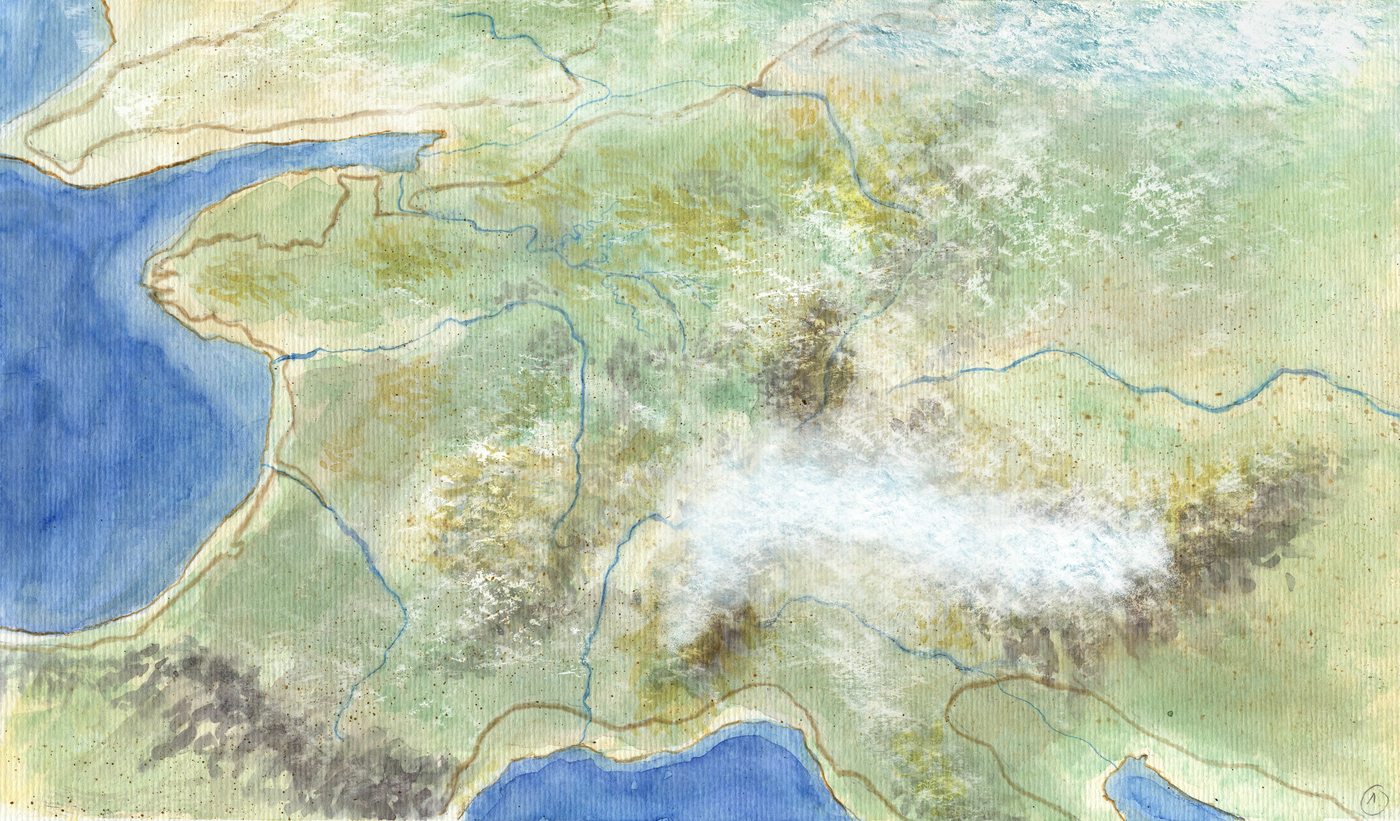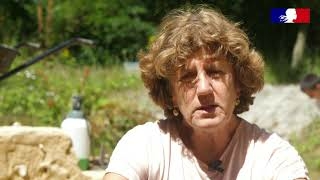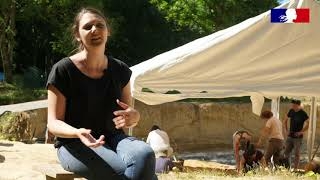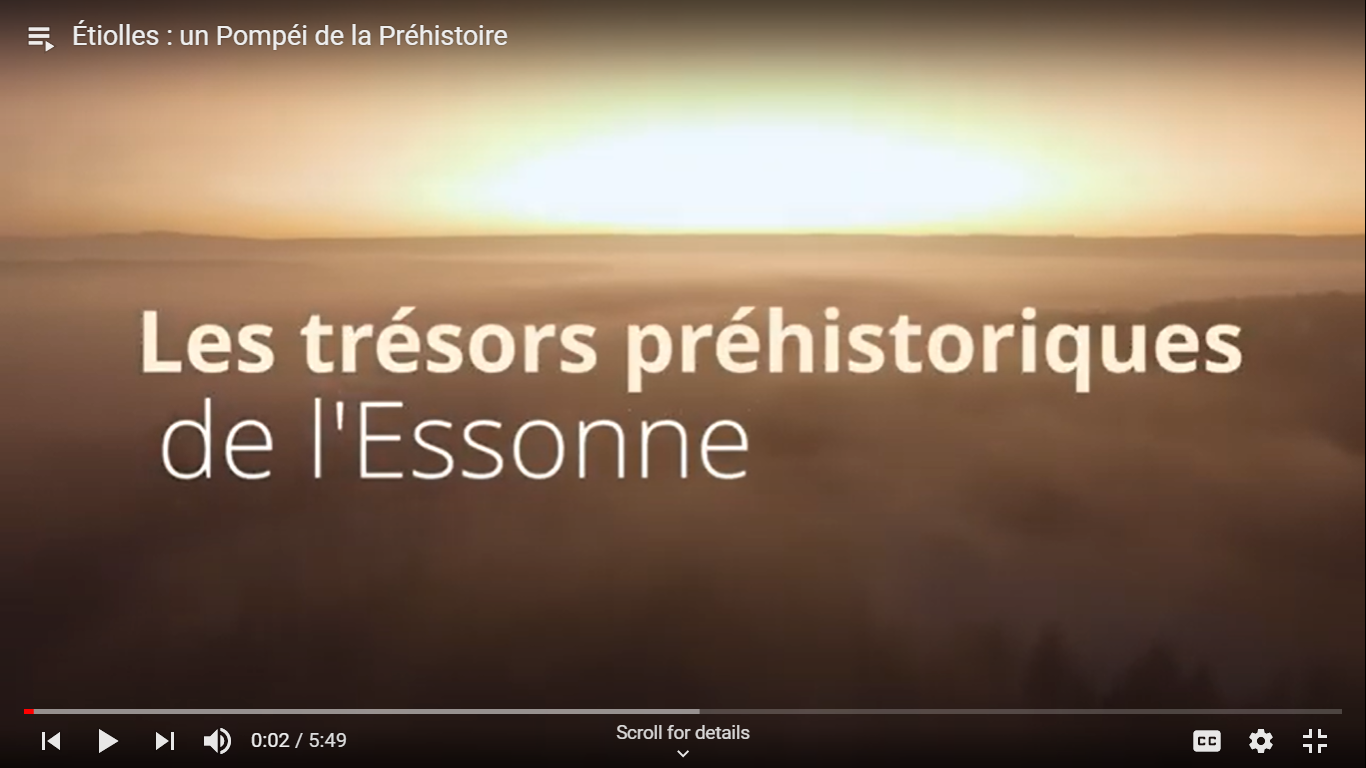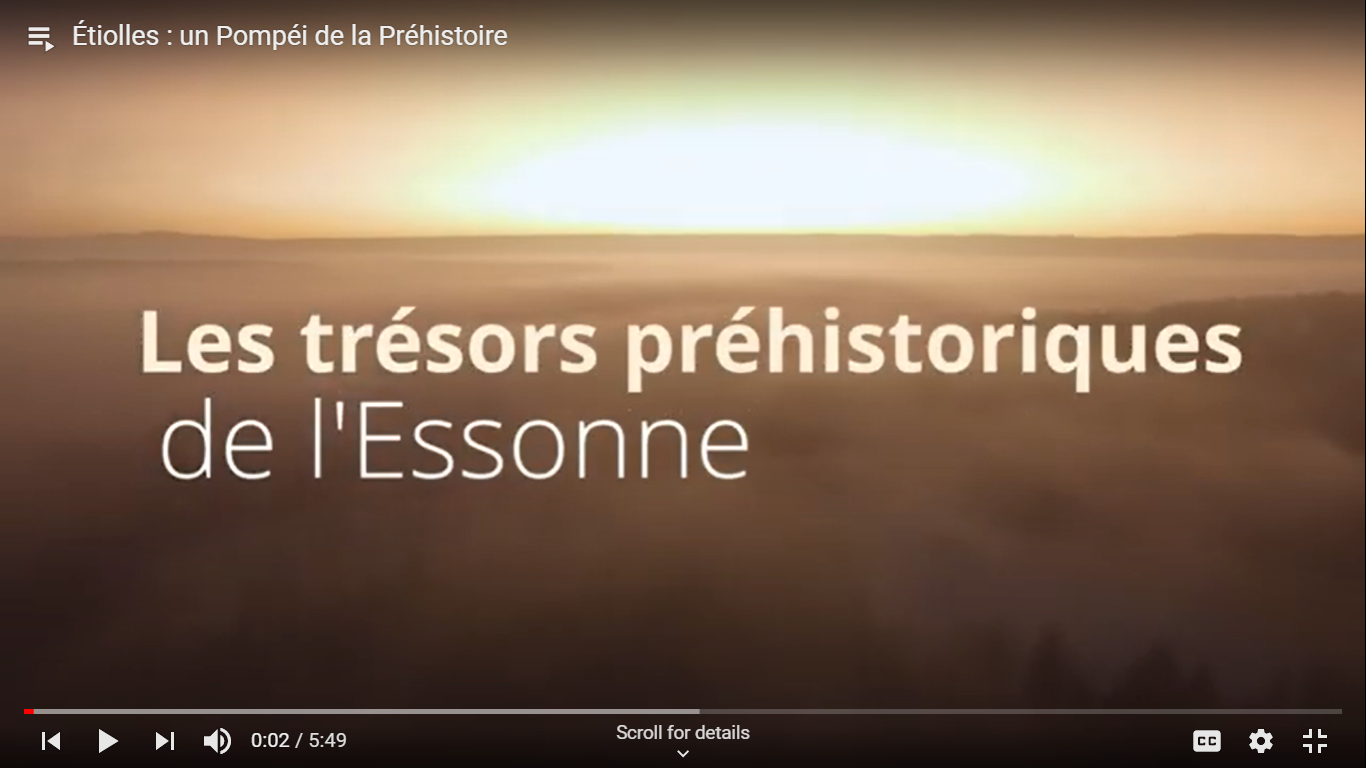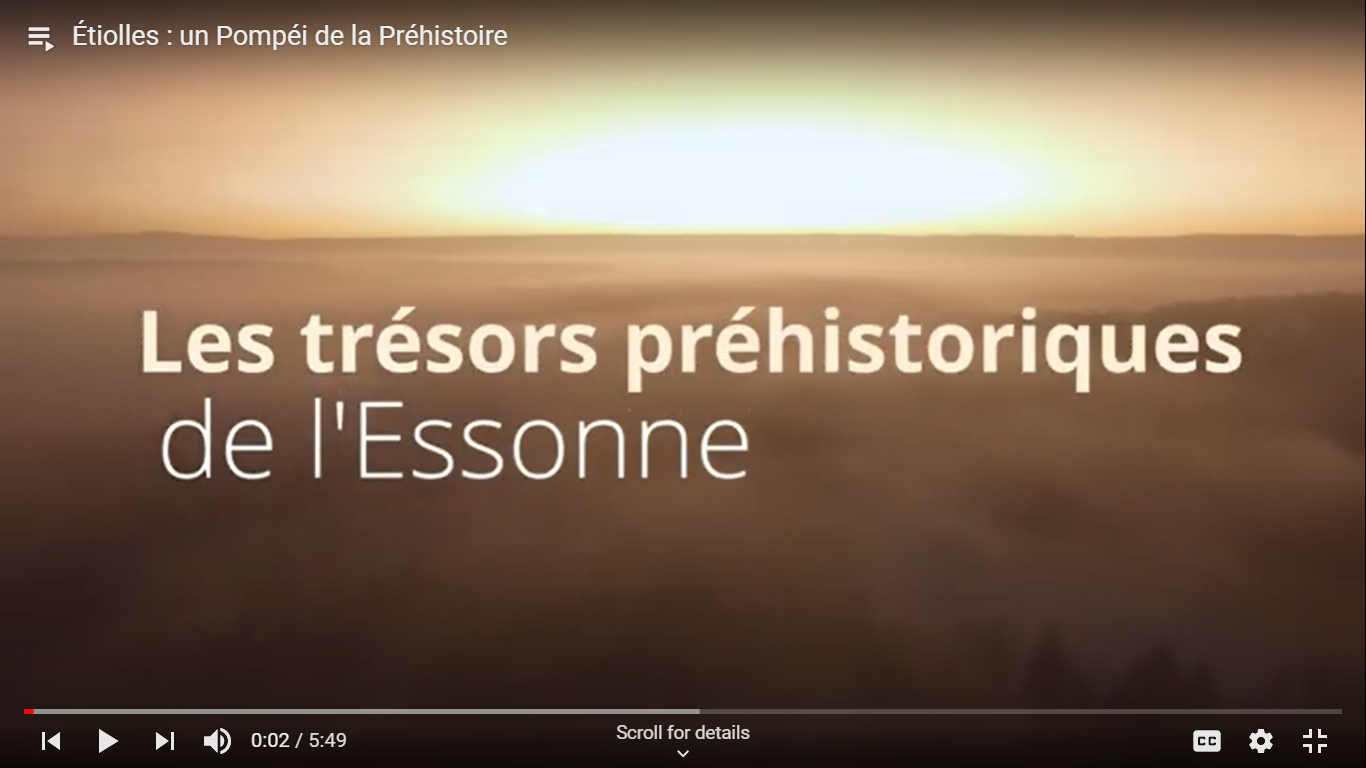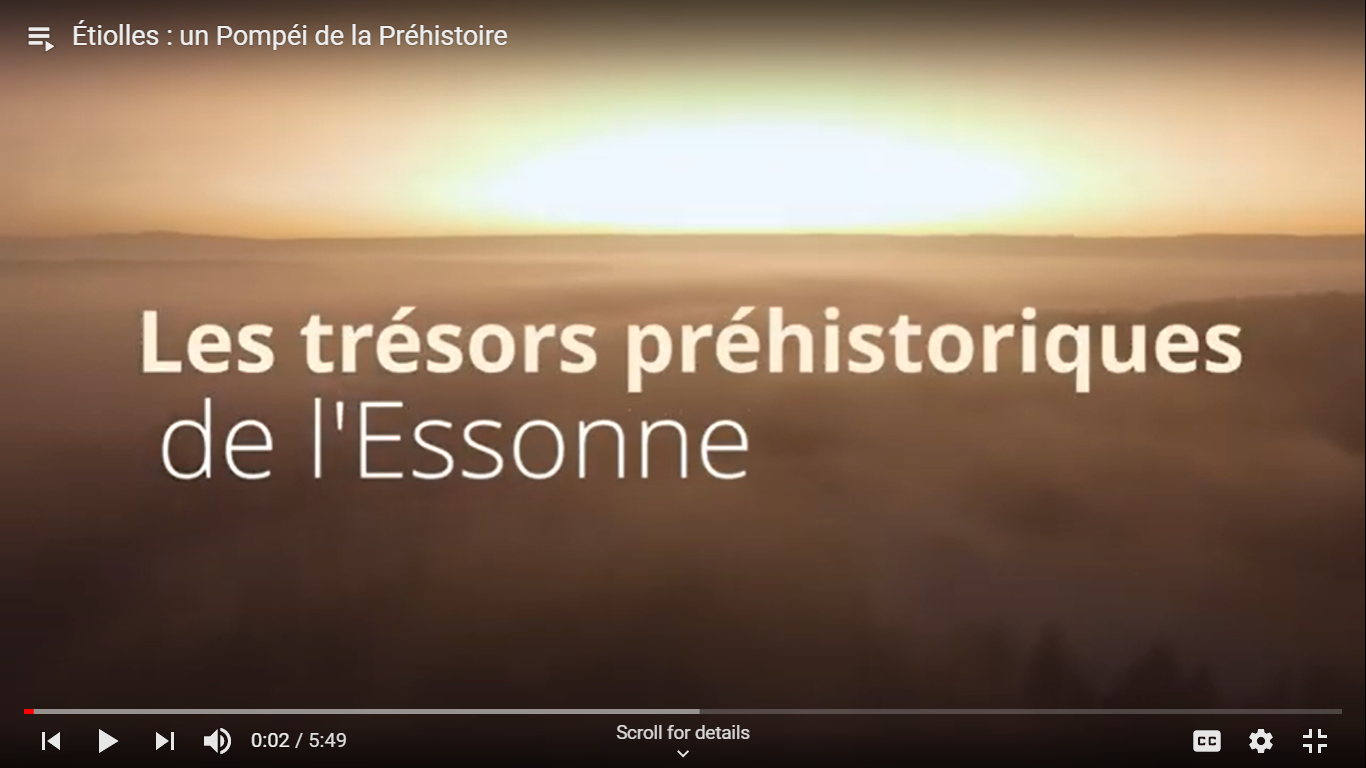Étiolles. Palaeolithic encampments
Discovered in 1971 by amateur archaeologists who collected large amounts of flint scatter, the Étiolles site revealed the remains of Magdalenian camps (circa 13,000 BCE) fossilised in alluvium from the Seine. Thanks to the site’s exceptional state of conservation, we can reconstruct the way of life of these nomadic hunter-gathers to an unusual degree of precision.
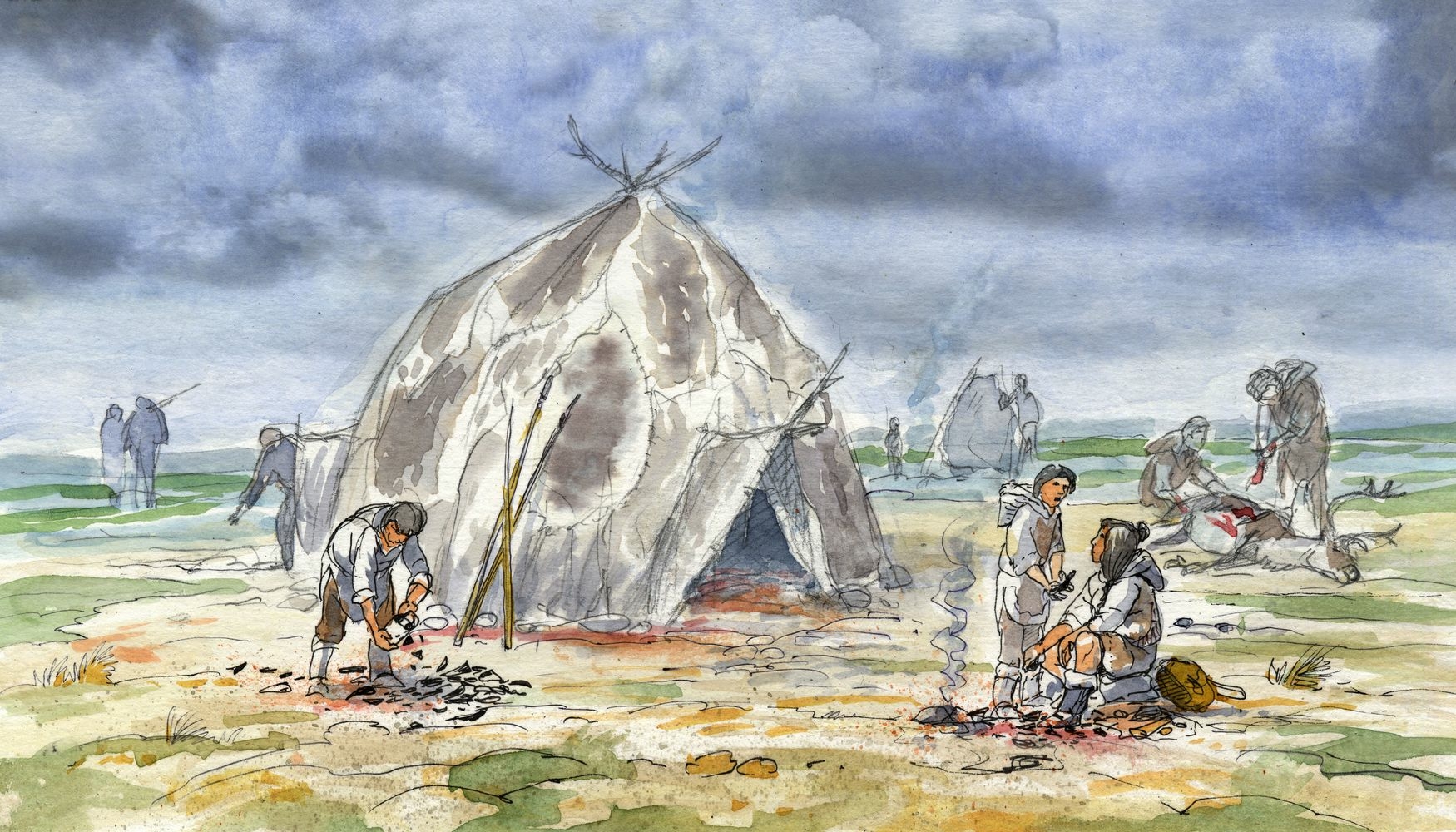
Seasonal camp
The Étiolles site consists of several superposed levels of occupation. Magdalenian families periodically spent time at the confluence with the Hauldres stream. They found game to eat, reindeer and horses, and large qualities of flint to make blades and other tools. The study of the remains of hunted animals suggests the site was probably occupied in spring or summer. The camps consisted of a few tents, some bordered by a circle of stone slabs, with outer activity areas. The many and varied hearths were located either inside habitations, in which case they were carefully arranged, or outside and simpler in design.
Unusually large flints and an enigmatic engraved stone
In Étiolles, very large blocks of flint were knapped to produce “blades", some 50 cm long, requiring a high level of skill developed over many years of practice. Some blocks reveal traces of less skillful napping, probably by children. Access to the flint and the siting of knapping posts were subject to societal norms and depended on the knapper’s level of skill. Other activities, such as preparing the points of hunting weapons made from reindeer antlers or the processing of skins, were performed at other posts. Next to one hearth, archaeologists found a stone engraved with horses, reindeers and a fabulous creature. This exceptional find in the Paris Basin suggests the existence of a mythology shared by the Magdalenian tribes from Spain to Germany.
Scientific team
The scientific team consists of several university and CNRS researchers, members of the “Prehistoric ethnology" team at ArScAn - UMR 7041 and regular contributors working for other institutions and UMRs (INRAP, SRA Pays de Loire, ZBSA, Germany).
Learn more by visiting the website of the Musée de Nemours:
- The Étiolles site: www.musee-prehistoire-idf.fr/les-magdaleniens-d-etiolles
- The Étiolles engraved stone: www.musee-prehistoire-idf.fr/le-pierre-gravee-d-etiolles-calcaire
- The Étiolles core: www.musee-prehistoire-idf.fr/nucleus-en-silex
A presentation of the excavation in the "Devenir archéologue" web series
Image credit: Gilles Tosello




